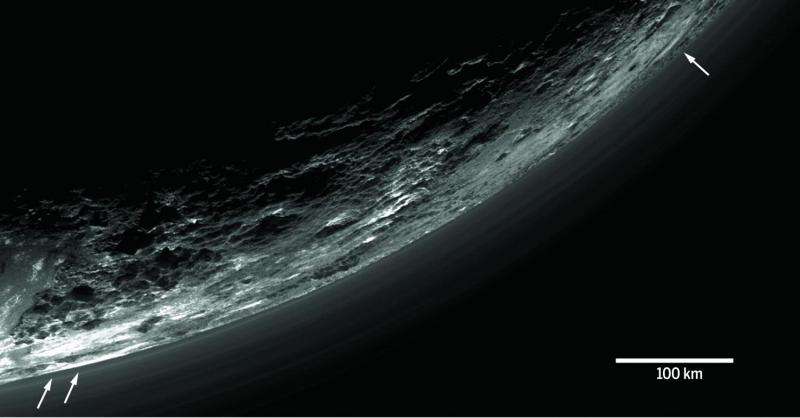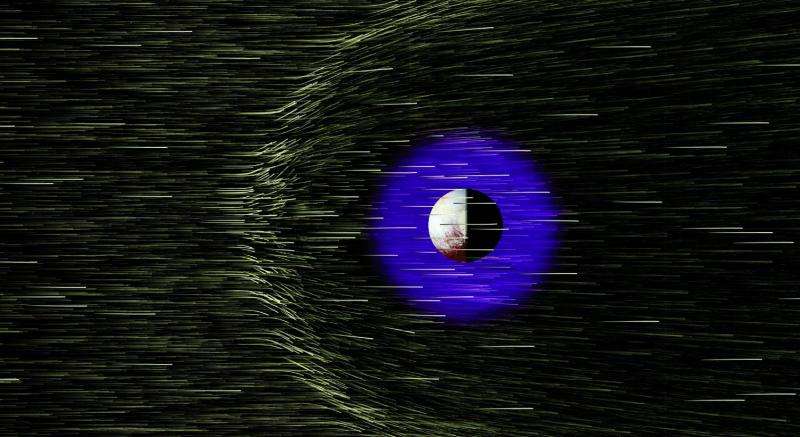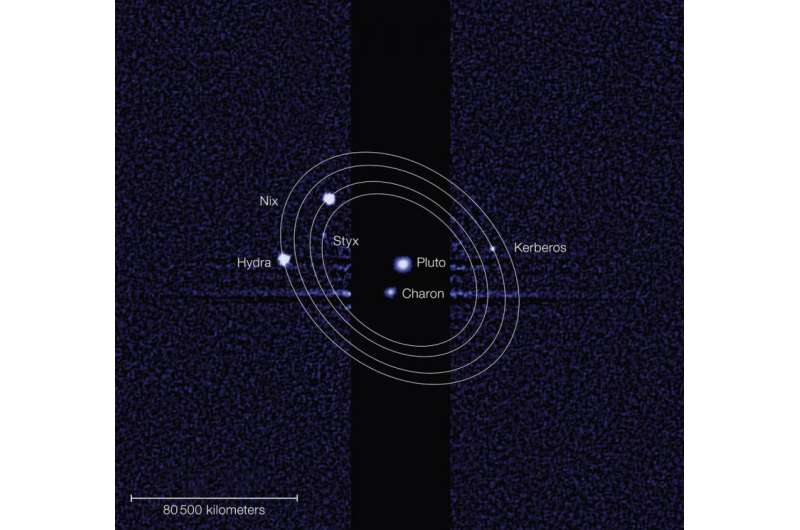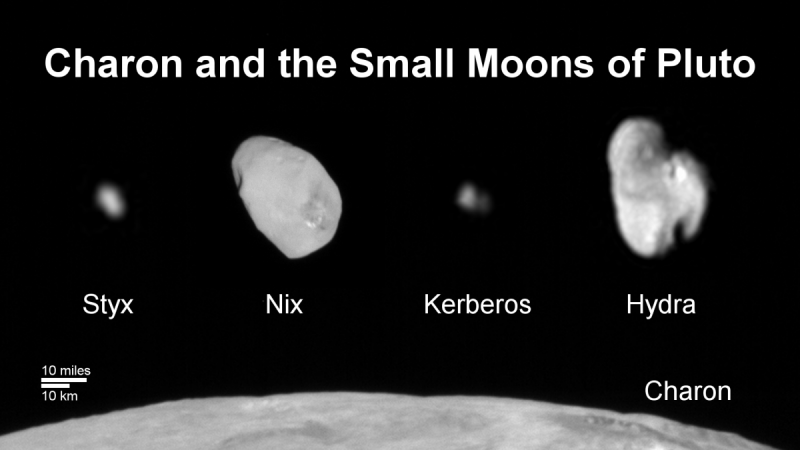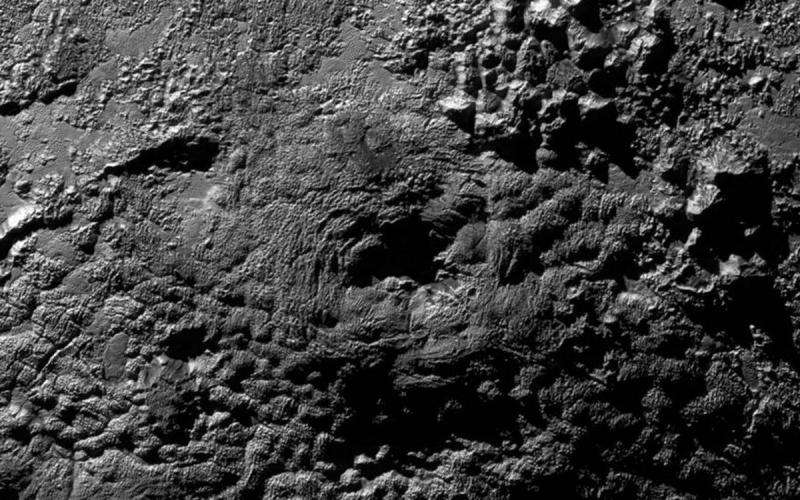Image from "The atmosphere of Pluto as observed by New Horizons," by G.R. Gladstone et al. This material relates to a paper that appeared in the March 18, 2016, issue of Science, published by AAAS. The paper, by G.R. Gladstone at Southwest Research Institute in San Antonio, Texas, and colleagues was titled, "The atmosphere of Pluto as observed by New Horizons." Credit: G.R. Gladstone et al. / Science (2016)
Eight months after its encounter with the New Horizons spacecraft, Pluto continues to surprise the scientists who study this distant world.
Pluto and its largest moon Charon comprise what is essentially a binary planet: two bodies of comparable size orbiting a common center of mass. The four smaller moons—Styx, Nix, Kerberos and Hydra—are thought to have formed at the same time as Charon in the aftermath of a large impact.
"Consequently, we expected the small moons to resemble Charon," says Mark Showalter, Senior Scientist at the SETI Institute. "Instead, we find that their surfaces are much brighter and much older than that of their large sibling."
In addition, scientists are puzzled by the moons' unusual rotation characteristics, as they orbit rapidly around axes that are tilted sideways.
"The gravitational tides from Pluto should have slowed down and re-oriented the spins of these moons by now, but they haven't," noted Showalter. The New Horizons team speculates that collisions from outside objects might cause the strange rotation of these moons.
New Horizons has revealed surprisingly complex geology on the surfaces of Pluto and Charon. Pluto sports a bright 1,000 km-wide plain, informally called Sputnik Planum, that is filled with volatile nitrogen and carbon monoxide ices. This feature shows no craters, which attests to ongoing geological activity. Beyond the smooth plains, there are ancient cratered terrains that display impacts that Pluto has endured over millions and billions of years. The rims and ridges are frosted with ice.
Most inner moons in the solar system keep one face pointed toward their central planet; this animation shows that certainly isn’t the case with the small moons of Pluto, which behave like spinning tops. Pluto is shown at center with, in order, from smaller to wider orbit: Charon, Styx, Nix, Kerberos, Hydra.
"Among the more puzzling features are the two tall mounds with central depressions that look like volcanoes," says Ross Beyer, Senior Scientist at the SETI Institute. "Wright Mons is about 2 miles tall and 90 miles wide, and Piccard Mons is even larger, about 3.5 miles tall and 140 miles across. They could be ice volcanoes, but this will take more analysis to establish."
New Horizons observations have also revolutionized our understanding of Pluto's atmosphere.
"We were very surprised to observe that Pluto's atmosphere has a multi-layered bluish haze that extends from the surface to altitudes above 200 km. The upper atmosphere is much colder than expected, which greatly reduces the rate at which it escapes from Pluto. We've also measured the surface pressure for the first time—about 11 microbars—and we've discovered that the temperature structure of the lower atmosphere varies with location," says David Hinson, Senior Scientist at the SETI Institute.
Image from "The small satellites of Pluto as observed by New Horizons," by H.A. Weaver et al. This material relates to a paper that appeared in the March 18, 2016, issue of Science, published by AAAS. The paper, by author at institution in location, and colleagues was titled, "The small satellites of Pluto as observed by New Horizons." Credit: H.A. Weaver et al. / Science (2016)
Pluto's partner—Charon—offers its own surprises. Its water-rich icy surface is distinctly red around its northern region; a coloration due to tholin, a molecule produced by ultraviolet irradiation of simpler compounds like methane and ethane. There are patches of ammonia ice evident on Charon as well.
"Unlike Pluto, Charon's surface is quite old and uniform. It's covered with water ice with low amounts of ammonia mixed in, and is not as geologically active as Pluto," says SETI Institute scientist Cristina Dalle Ore.
Credit: SETI Institute
A March 18 special issue of Science features articles on the continuing analysis of Pluto and its satellites. With roughly half of the New Horizons data returned to Earth so far, scientists anticipate more discoveries and a deeper understanding of this dwarf planet system.
-
Credit: SETI Institute
-
Credit: SETI Institute
Journal information: Science
Provided by SETI Institute
